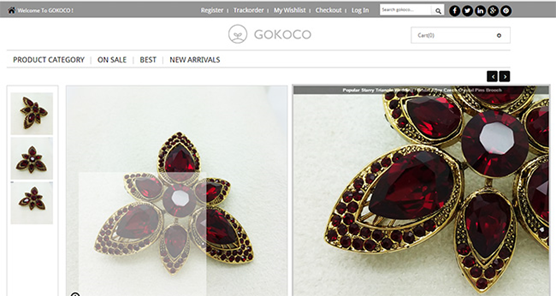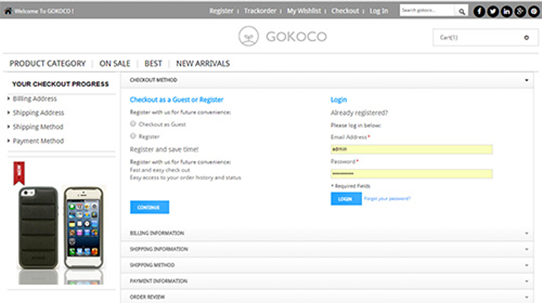- March 24, 2015
- Posted by: Wevio
- Category: Development, Wevio Blog

There are hundreds of e-commerce platforms that online merchants can choose from. The differences between these carts can be significant, it is important to know which features matter the most.
In this article, you’ll discover a rundown of ten “must-have shopping cart features” that either enhance the shopping experience for the customer or make it simpler for the merchant. In truth of the matter is that narrowing down shopping cart features to only ten critical ones leave out a great deal of other essential features as well. This list is a matter of personal opinion.
You may also notice that features near the top of the list are relatively more important, at least in my opinion.
This first section of features is aimed at improving a shopper’s interaction with the site and boosting sales.
Significant Well-designed Product Images:
Product images are among the best approach to correspond with clients on an ecommerce site.
“Presently consider it, at whatever point you’re shopping on the web, the product picture is the main open door you need to see that product, so on the off chance that its not great from the photograph, clients aren’t going to purchase,” said Matt Winn, an online specialized master with Volusion, a facilitated ecommerce stage.
In spite of the fact that product images are basically a standard gimmick on all shopping carts or ecommerce stages, it is imperative to discover an answer that is adaptable enough to permit you or your designer to resize the images, since larger is normally better. It is also useful if the feature includes product picture zooming.

Gokoco product pages feature large, zoom ready images.
Sometime ago I came across a picture of the Gokoco site in an article about product photography. The picture was so compelling that I went directly to the site.
Another example comes from their pet supplies clothing, which uses 417 by 561 pixel product images on its product pages. Shoppers may also see a larger version of the image, which is 683 by 792 pixels.
![]()
Gokoco uses 417 by 561 pixel product images on its site.
Product Reviews:
According to survey of “consumer opinions posted online.” While there may not be a perfect one-to-one relationship between “consumer opinions posted online” and product reviews on an ecommerce site, keeping this in mind, it is imperative that a shopping cart either includes support for product reviews right out of the box or has an easy way to implement third-party product reviews.
A few extremely successful online stores make fantastic utilization of product reviews. For instance, Gokoco Jewelry retailer, every now and again has more reviews for individual products. These reviews can help shoppers make good buying decisions.

Layered and Faceted Navigation:
Layered and faceted navigation make it much easier for shoppers to find just what they’re looking for on an ecommerce site.
This kind of navigation divides products into rational sub-categories, and displays those sub-categories as product filters. Using this kind of a system, shoppers may drill down to products based on price, color, features, or attributes. As executed in a shopping cart, this feature should be data driven and programmatic. A site administrator or owner only needs to establish the business rules and the shopping cart should do the rest.
You will find examples of layered and faceted navigation on many — if not most — leading online retail sites. Gokoco, an online store, makes extensive use of layers and facets on its pages. In fact, if you look at the URL for a typical Gokoco product category page, you will even see references to these facets. Here’s an example:

https://www.gokoco.com/gkc.html
Single-Page, Fast Checkout:
Actually paying for a purchase online is the last hurdle a shopper must traverse before completing an order. A shopper interested in buying wants to complete this step as quickly as possible and a merchant should try to get out of the way.
One of the simplest methods to streamline checkout is to limit the checkout form to as few fields as possible and keep the entire form on a single page to avoid loading a new page at each stage of the checkout process.
Single page checkout “reduces abandoned shopping carts,” “enhances user-friendliness”, and “streamlines customer experience.”
For examples of single-page checkouts you can look at Gokoco Jewelers apparel.

Search:
As surprising as it may seem, some ecommerce platforms do not support site search. So be sure that the one you select does. What’s more, make search prominent.

Coupons and Discounts:
A good ecommerce platform will have couponing and discounting built in. For example, when you shop at the Gokoco store, the camera retailer, you’re given an opportunity to enter a discount or coupon codes as soon as you start the checkout process.

Large effective product images; product reviews; layered and faceted navigation; single-page checkout, site search, and discount and coupons codes combine for a pretty powerful user experience, but a good ecommerce platform should also take care of the merchant. Here are three more features that you must have.
Product Import and Export:
The Internet is always changing and evolving. Likewise, so is ecommerce. A few years ago, it would not have occurred to me that a shopping cart should have good product import and export capabilities, but now this is a must-have feature. Whether one is exporting product data to a shopping comparison site or a Facebook store or synchronizing inventory from an online store to a physical location, the ability to easily transfer price, inventory, or product updates in to or out of a shopping cart is essential.
Look for a cart that makes this extremely simple.
Easy Integration with Third Party Solutions:
There are many ways to go about building an ecommerce shopping cart, including a modular construction that allows site owners to easily add third-party solutions. For example, if you would like to use QuickBooks for accounting, there should be a simple way to connect it to your shopping cart without spending a fortune on development. Likewise, if you would like to use MailChimp to manage your newsletter it should be easy to integrate.
Conclusion:
There are many shopping carts and even more shopping cart features to consider, but the ones listed here are essential.
